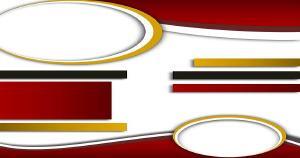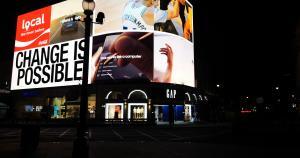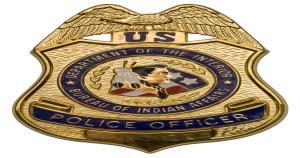Benefits of Dynamic QR Codes on Food Packaging that You Should Know!
Jonathan Palley
Feb 22, 2024
Being in the food industry is not just about providing mouth-watering and aesthetic-looking meals. It also requires you to offer transparency and safety on the ingredients you are using. On top of this, you also need to consider how to mitigate waste from the food product packaging itself.
But the question here is how can you do all these? One great solution to your problem is by using QR codes. QR codes offer an effective way to allow your consumer access to detailed information about your products before they purchase. At the same, it helps cut-down expenses by mitigating the use of additional printed materials.
In this blog post, let’s explore the benefits of QR codes on food packaging and how they can help you develop a more creative marketing and online promotion strategy for your food business.
Getting to Know the Benefits of Dynamic QR Codes on Food Packaging
There has been a drastic growth in the use of QR codes in the food and beverage industry too. And this increase in the demand for QR codes is due to the convenience it provides both to the consumer and business owner.
Here are some of its benefits:
Improved Traceability and Transparency
If you have been in the food industry for years, you know that consumers pay huge attention to what food is being brought to their table. It is essential for them how their food is being prepared and what ingredients they are using.
QR codes empower consumers to make informed purchasing decisions and dietary preferences.
For example, having QR codes enables consumers to access information about where their food comes from, its production and how it is distributed. By just scanning the QR code, consumers can now view what are the ingredients and nutritional value of the food.
Enhanced Food Safety and Quality Control
As we mentioned, implementing QR codes also benefits not just consumers but also business owners.
The use of QR codes is not only limited to the distribution of information, it is also used to track and monitor food quality and safety in the supply chain.
By including dynamic QR codes, businesses can now monitor in real-time the transfer of the product from farm to table. This process allows them to effectively identify safety issues as well as improve quality control and reduce waste.
Increased Customer Engagement and Interaction
The services provided in the food industry do not end after the purchase has been made. Businesses also need to ensure that customers get to enjoy their meals and services through social interaction.
Applying dynamic QR code that links to manufacturer websites and social media pages implies that businesses care about what their consumers have to say. For instance, this gives consumers the opportunity to access additional information and provide feedback about their experience with the food.
This helps elevate customer engagement and also allows businesses to gain valuable data to improve their service based on customer preferences.
Dynamic QR Codes and Marketing Strategies
QR codes on food packaging are not only used to improve customer experience. It also plays a crucial role in developing a marketing strategy to promote products and engage consumers.
For example, you can use dynamic QR codes to provide consumers access to exclusive content and promotions to encourage them to take action. Among these contents that you can use are the following:
- Behind-the-scenes video production
- Product demo
- Discount codes and coupons
Are there Successful QR Code Marketing Campaigns in the Food Industry?
The benefits and what you can do with QR codes may sound too good to be true. However, keep in mind that many established businesses are now utilizing it to elevate their marketing strategies.
Businesses like Starbucks are now including QR codes on their cups and flyers to provide consumers access to their exclusive content and loyalty program.
Another example of a business using QR codes is McDonald’s. Their packaging now contains QR codes to enable consumers to access nutritional information and fun games.
These businesses demonstrate the potential of using QR codes when it comes to improving customer engagement and driving sales.
If you are looking for a QR code generator to help you get the job done, you can use QR Code Generator Hub for free tracking and unlimited scanning. They also allow you to create customized QR codes to align them with your brand for FREE!
How to Use QR Codes on Food Packaging
Before you are able to reap the benefits of using QR codes on food packaging, it is important that you follow the best practices for implementing it. In this part, we will run down a few tips to consider when using QR codes.
Below are some tips and practices you should know:
- Make sure the QR code is clear and scannable
- Highlight the value of scanning QR codes to your customers
- Link stored in QR code should lead to mobile-friendly content
- Place the QR code where it can be easily seen
- Test and optimize the QR code
Bottomline
Integrating dynamic QR codes into food packaging is now becoming popular as more businesses recognize its potential benefits. By providing consumers with the product information they need, businesses can establish stronger relationships and loyal customers through the use of QR codes in their marketing strategy.
As the food industry continues to thrive, expect that dynamic QR codes will become bigger and more important in the coming years. And as a business owner in the food industry, it is now your chance to grab this opportunity to make your brand stand out in the market.
FAQs
How do you use QR codes on the packaging?
To use QR codes on packaging, simply print the QR code on the label or packaging material. When a customer scans the QR code on the primary packaging with their smartphone, they will be taken to a website or landing page that provides more information about the product.
Why are there QR codes on food?
There are QR codes on food to provide information about the product, such as the ingredients, nutrition facts, and country of origin. QR codes make it easy for consumers to get this information without having to search for it.
What is a QR code on a package?
A QR code on a package is a code that can be scanned to provide information about the product. QR codes can be used to track the product's journey, provide product information, or even offer discounts.
Can I use a QR code for ingredients?
Yes, you can. For example, you can use a QR code to store information about the ingredients in a recipe.



